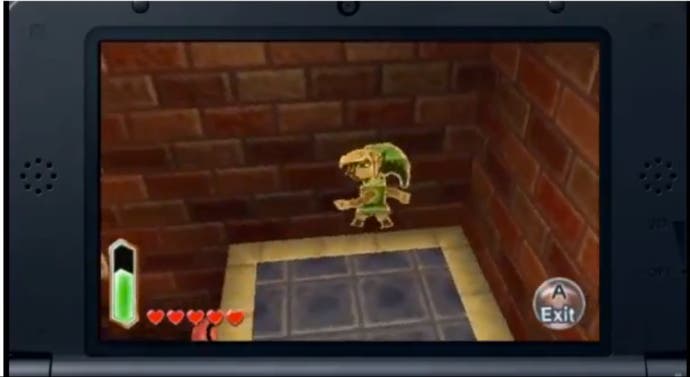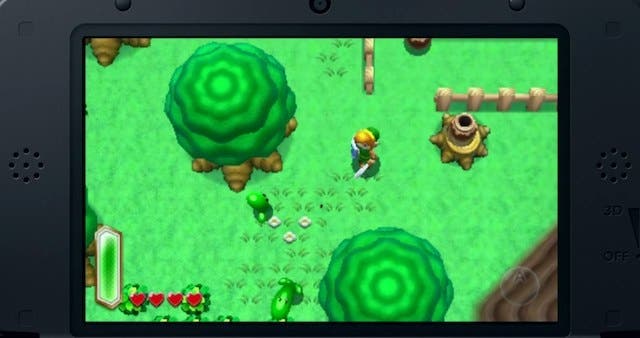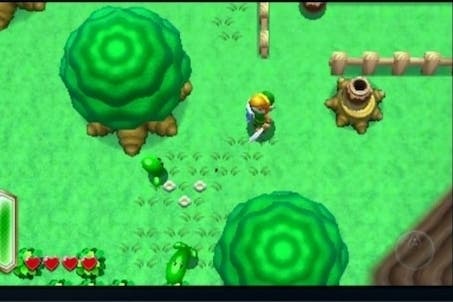The Legend of Zelda 3DS preview: Linked to the past
Nintendo's return to a SNES classic is a mixed blessing.
The Legend of Zelda's in something of an awkward predicament: in one camp there are those who roll their eyes when the first dungeon of a new entry plonks a slingshot in their hands, and from the other there's the deafening squeals that meet the announcement of a game that follows oh-so-closely in the footsteps of a classic that's getting on for 22 years old.
The Legend of Zelda on 3DS - it's yet to receive an official title, and while it's tempting and fairly representative to call it Link to the Past 2 Nintendo's likely to be a little less blunt with the final thing - isn't about to take the series in a bold new direction. But then again no-one's expecting it to; if it's a warm comfort blanket that gently reminds you of how taut Nintendo's brand of top-down adventuring remains, then this delivers wonderfully.
At present Nintendo's only offering a glimpse at a 13-floor dungeon, but it's all so familiar that it's easy to walk away with a fair impression of so much more. There are Stalfos creaking about, hardhat beetles bouncing between bumpers and it's all topped off by an appearance from Moldorm, one of the SNES original's most iconic bosses. You've likely played this all before, and that doesn't necessarily mean you won't be queuing up to play it all again.

There are differences, of course. The art-style builds on top of the pixel art of the original, and there'll doubtless be some who find the move into three dimensions a little unsightly. It works, though, and there's a confident flourish that lets you know this is the real deal, the little flick of hair that bounces under Link's cap, the marshmallow edges and the doughy clouds all given a little volume while remaining faithful to the original. Squint a little, in fact, and it feels like this Zelda's found a neat little middle ground between a 16-bit look and the brilliantly expressive artwork you used to linger on in Link to the Past's manual.
Look a little beyond that and you'll see one of the key differences in the 3DS's new Zelda. Too few games for Nintendo's eccentric handheld have made the most of the depth effect - Super Mario 3D Land remains the standard bearer - and there's a pleasant irony that it's a 2D revival that's having the best crack yet. Nintendo's having a lot of fun playing with that depth, most explicitly when it propels Link up a floor through the use of some bouncy switches, and most pleasingly when it transforms him into a wall painting, allowing him to slide between bars or traverse gaps.
There's an awful lot of style here, then, and it's great to see the Zelda formula thoughtfully applied to all of the 3DS's odd little crooks and crannies. The chassis it's built on hasn't really changed, and there's of course an argument that there's no real need for it too. Link's got his sword which can be charged, and which fires out a little pulse of energy if swung when you're at full health. And, in this demo, there are some familiar tools. There's a bow and arrow that benefits from a soft lock-on, a shield that sends Stalfos bones spinning out of the screen and a Magic Hammer that's great for freezing enemies or up-ending Terrorpins. It feeds off a magic meter - as does Link's ability to turn into a drawing whenever he nears a wall - that now replenishes over time rather than relying on picking up any Magic Jars you may find lying around.

And that's as far as this new Zelda on the 3DS ventures from the formula, for now at least, which is something of a mixed blessing. Zelda's always been a series built on grand, immovable traditions, about retelling the same tale with a different context, and about handing the story down from one generation to another.
In that regard, this should be nothing but a triumph: an old bedtime favourite retold in a new and more vibrant voice. In another, though, I'm not quite so sure: this is a product of the Nintendo that's so keen to remind us of its heritage that it's in danger of not living up to it, as it repackages old formulas and churns through them at an alarming rate. This isn't necessarily the start of an annualised Zelda, but it feels very much like it's drawn from the same pool as the New Super Mario Bros. games rather than from whatever strange sauce brought us the fever dream of Link's Awakening - and that it's from a Nintendo that's happy to draw upon past memories without being quite bold enough to conjure new ones of its own.

